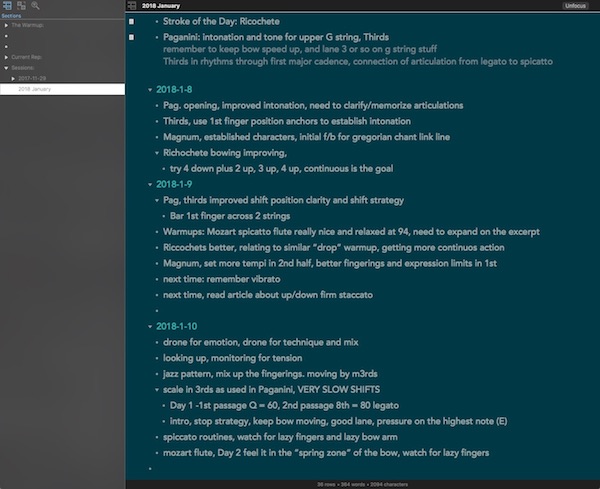On the surface, it seems like a big waste of time; the idea of stopping your (already too short) practice session to write down notes and reminders certainly feels counterintuitive.
And yet, the most valuable music practice tips fall into this “hear the beat of a different drummer” category.
This has been super useful for me. When you have come to a satisfying “end of a paragraph” in your practice, just take a moment to write down what happened, how you got to this point, and what’s needed to pick things up seamlessly next time.
Using pen and paper on your desk is fine, though I use the software program Omni Outliner to make things more efficient and searchable. Obviously, do what works best for you.
In the image above, you can see a daily journal, though I also write down reminders for the overall structure of my practice including warmups, etudes, scales and a list of current repertoire for performance.
In another section, I keep reminders for useful practice strategies, and big picture reminders from my coach and/or other sources.
The great thing about all of this: Even if I take a few days off, I can mentally jump right back to where I left off, even while my fingers and body are catching up. The practice journal saves a huge amount of time and frustration, while it only takes a few moments to create my daily entries.
Start as simple as you like. Next time you pick up your violin, make sure your notepad is close by. I’m certain you’ll enjoy the results all year long!


